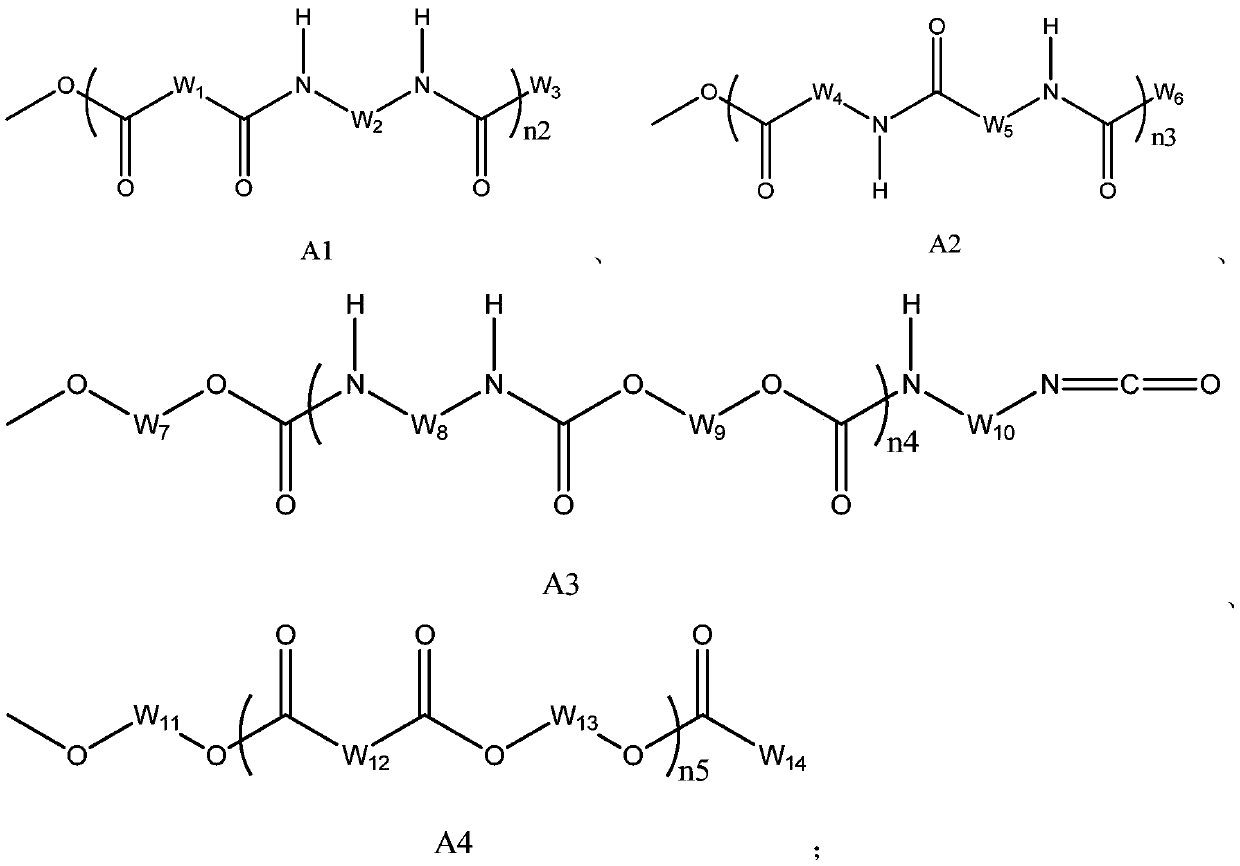Thermoplastic epoxy resin and application thereof, and surface modifier for carbon fibers
A technology of surface modifier and epoxy resin, which is applied in the fields of carbon fiber, fiber treatment, textiles and papermaking, etc., can solve the problems of complex process, increased cost, and large damage to the mechanical properties of carbon fibers, so as to achieve good mechanical properties and improve wetting The effect of increasing the wetting contact area
- Summary
- Abstract
- Description
- Claims
- Application Information
AI Technical Summary
Problems solved by technology
Method used
Image
Examples
Embodiment 1
[0027] The present embodiment provides a kind of modified carbon fiber, carries out according to the following steps:
[0028] (1) Synthesis of thermoplastic epoxy resin:
[0029] Mix 1000g of bisphenol A epoxy resin E51 and 250g of benzylamine, stir evenly, heat up to 150°C for 2 hours, and obtain thermoplastic epoxy resin B.
[0030] Add 30g of caprolactam into the three-necked flask, heat under reduced pressure to remove the original water, then add 2g of water, 5g of oxalic acid, and 1g of concentrated phosphoric acid in sequence, and heat to 160°C under nitrogen protection, react for 1 hour, and then heat up to 250°C °C to continue the reaction for 2 hours. Slowly cool after the reaction to obtain polyamide. 150 g of the above-mentioned thermoplastic epoxy resin B was heated up to 160° C., and then 30 g of polyamide and 0.005 g of stannous octoate were added to react for 6 hours. Add 0.005g stannous octoate again, react for 8 hours, obtain the thermoplastic epoxy resin...
Embodiment 2
[0036] The present embodiment provides a kind of modified carbon fiber, carries out according to the following steps:
[0037] (1) Synthesis of thermoplastic epoxy resin:
[0038] Mix 1000g of bisphenol A epoxy resin E51 and 250g of benzylamine, stir evenly, heat up to 150°C for 2 hours, and obtain thermoplastic epoxy resin B.
[0039]Add 30g of caprolactam into the three-necked flask, heat under reduced pressure to remove the original water, then add 2g of water, 5g of oxalic acid, and 1g of concentrated phosphoric acid in sequence, and heat to 160°C under nitrogen protection, react for 1 hour, and then heat up to 250°C °C to continue the reaction for 2 hours. Slowly cool after the reaction to obtain polyamide. 150 g of the above-mentioned thermoplastic epoxy resin B was heated up to 160° C., and then 30 g of polyamide and 0.005 g of stannous octoate were added to react for 6 hours. Add 0.005g stannous octoate again, react for 8 hours, obtain the thermoplastic epoxy resin ...
Embodiment 3
[0045] The present embodiment provides a kind of modified carbon fiber, carries out according to the following steps:
[0046] (1) Synthesis of thermoplastic epoxy resin:
[0047] Mix 1000g of bisphenol A epoxy resin E51 and 250g of benzylamine, stir evenly, heat up to 150°C for 2 hours, and obtain thermoplastic epoxy resin B.
[0048] Under nitrogen protection, add 10g of polyether diol, a few drops of dibutyltin dilaurate and 10g of 2,2-dimethylolpropionic acid dissolved in a small amount of N,N-dimethylformamide into the flask, stir The temperature was raised to 50° C., and 10 g of isophorone diisocyanate was added dropwise; after the dropwise addition, the temperature was raised to 80° C., and reacted for 2 hours to obtain polyurethane. Dissolve 150g of the above-mentioned thermoplastic epoxy resin B in chloroform, add 3g of butyl glycidyl ether reactive diluent, and stir evenly. Under the protection of nitrogen at 65°C, add the above polyurethane dropwise to the thermop...
PUM
 Login to View More
Login to View More Abstract
Description
Claims
Application Information
 Login to View More
Login to View More - R&D
- Intellectual Property
- Life Sciences
- Materials
- Tech Scout
- Unparalleled Data Quality
- Higher Quality Content
- 60% Fewer Hallucinations
Browse by: Latest US Patents, China's latest patents, Technical Efficacy Thesaurus, Application Domain, Technology Topic, Popular Technical Reports.
© 2025 PatSnap. All rights reserved.Legal|Privacy policy|Modern Slavery Act Transparency Statement|Sitemap|About US| Contact US: help@patsnap.com



